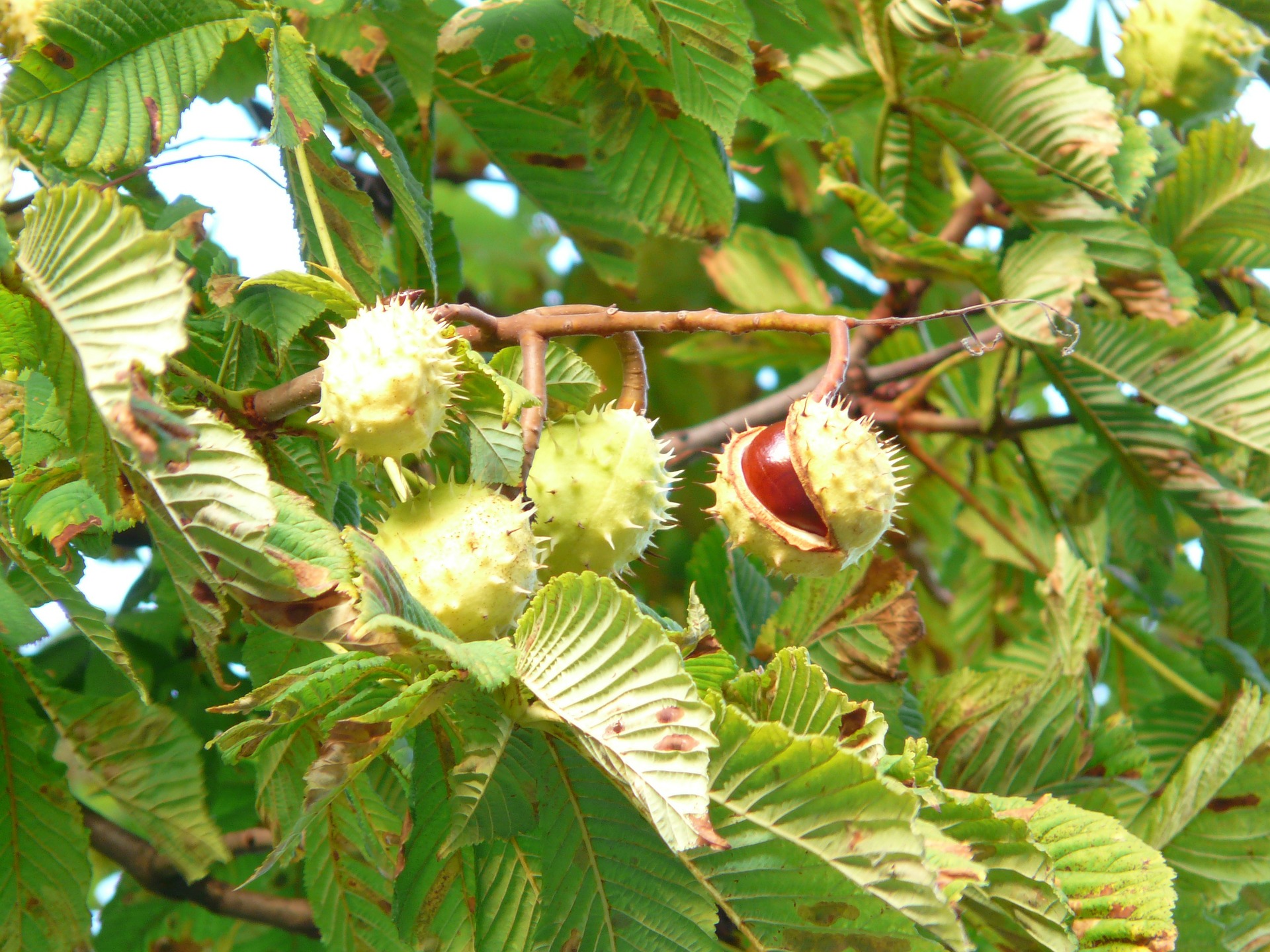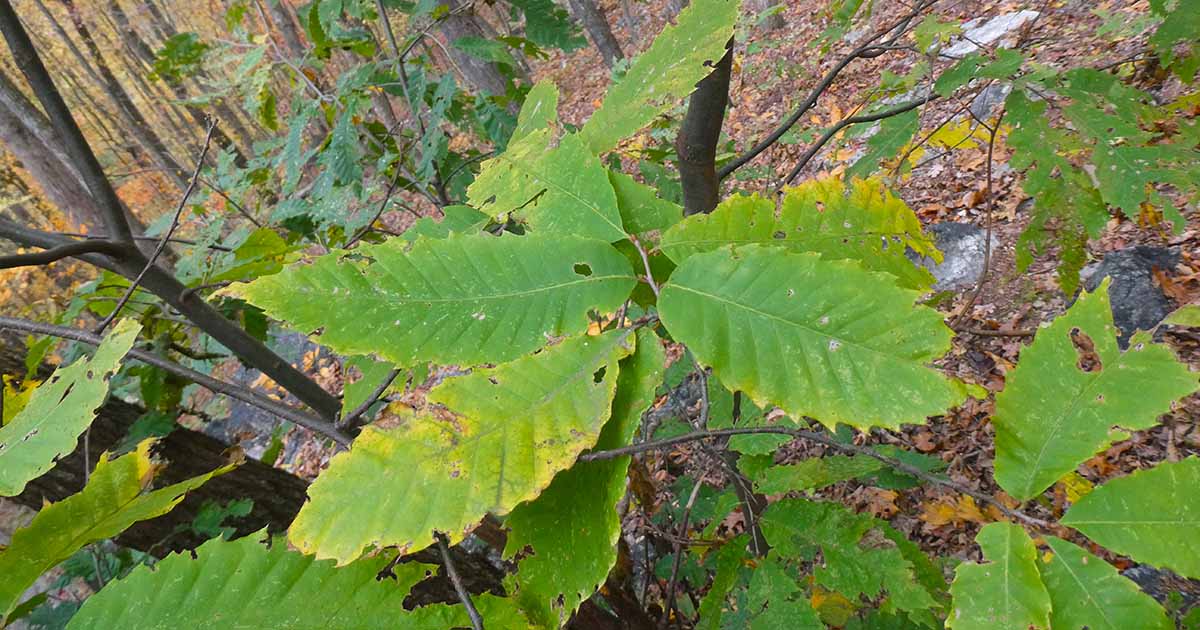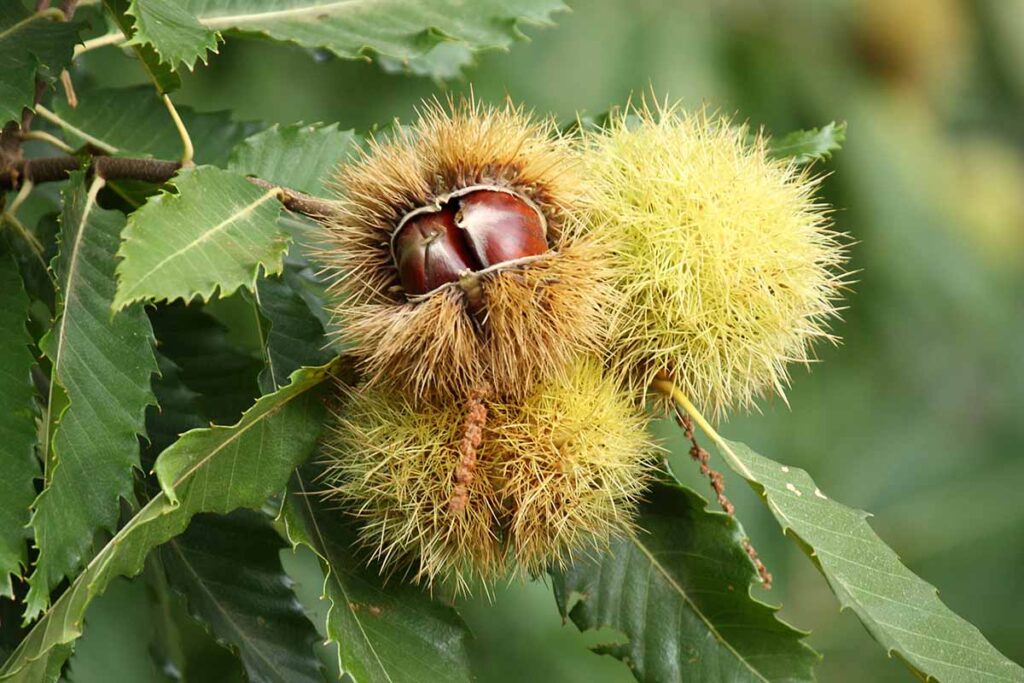Master Chestnut Care: Beat Common Pests and Diseases with Ease!

The first time I saw chestnut blight up close, it was on a century-old survivor shaded by morning mist in the Appalachian foothills. I was twenty-two, apprenticing under an orchardist named Russ who’d been coaxing life from American chestnuts for three decades. He ran his hand along the canker—a patchwork of sickly orange and sunken bark—and said, almost reverently, “If you grow these trees, you have to be ready for heartbreak. But you also get to witness resilience like nowhere else.”

That lesson’s stuck with me through seasons of triumph and loss, and it’s why what follows isn’t just a list of threats or textbook solutions. This is the practical story—grounded in lived experience, seasoned with research and insights from growers who’ve outsmarted (and sometimes lost to) nature’s relentless inventiveness.
If you want answers about chestnut pests and diseases, yes—you’ll find them here. But if you want wisdom that sticks, strategies proven in mud-caked boots, and the kinds of small details that mark an expert’s hand… settle in. This is your guide: not just to survival, but to legacy-building mastery.
1. Why Knowing Your Chestnut Tree Is Step One
Before we talk bugs or blights, let’s start where all good stories do: understanding your main character.
When someone emails me a panicked photo—wilted leaves, pockmarked nuts—the first thing I ask is simple: What species are we looking at? It matters more than most realize.
- American Chestnut (Castanea dentata): These are the heartbreakers—ghosts of Eastern forests, famously susceptible to blight.
- Chinese Chestnut (C. mollissima): The comeback kids—disease-resistant but require careful pruning for airflow.
- European Chestnut (C. sativa): The wine country workhorse—tougher against some threats but still vulnerable.
- Japanese Chestnut (C. crenata): Often overlooked except by those chasing niche flavors or hybrid vigor.
Think of species choice as your first—and biggest—pest management decision. Back in 2016, I watched two adjacent orchards after a wet spring: pure American trees dropped like dominoes from ink disease while Chinese hybrids shrugged off soggy roots with barely a yellowed leaf.
Takeaway:
Record every tree by species—even if it means hunting old receipts or making tree tags yourself with a grease pencil. You’ll thank yourself at the first sign of trouble.
2. Meet the Usual Suspects: Pests & Diseases With Faces
Pests Who Show No Mercy
There are days when you think everything's fine… then sunlight slants just right and you spot exit holes peppering every fallen nut. That’s when you meet:
Curculio sayi & C. caryatrypes: The Weevils
These tiny beetles lay eggs inside ripening nuts; larvae chew their way out come September with ruthless efficiency.
- Sensory tell: A faintly musty smell when splitting infested nuts.
- Fix: In my experience (and confirmed by research out of University of Missouri), harvesting every day during drop season slashes infestation rates by as much as 60%. On years I got lazy? Damage doubled.
For a deeper dive into organic and targeted strategies for these and other nut pests, check out Common Insect Pests of Chestnut Trees and Organic Control Methods.

Asian Gall Wasp (Dryocosmus kuriphilus)
Gall wasps sneakily lay eggs inside buds; distorted green-red “galls” pop up by June.
- The twist: Birds often ignore these galls; they don’t look appetizing—even wasp parasites miss early ones.
- Best tool: Sharp pruners + thick gloves (the sap smells sharp & funky). Burn everything you remove—don’t compost!
If you’re dealing with stubborn galls or want to identify them with certainty, you’ll find practical steps in Dealing with Chestnut Gall Wasp: Identification, Impact, and Management.
Aphids & Sooty Mold
Aphid infestations often announce themselves by sticky honeydew and shimmering black mold coating leaves.
- Tip learned the hard way: A full-force hose spray every couple weeks beats most store-bought sprays—in part because it disrupts ants farming aphids mid-morning (“You see those ants?” Russ would say. “They’re worse than uninvited relatives.”)
Diseases That Haunt Generations
Chestnut Blight (Cryphonectria parasitica)
The killer that changed American ecosystems forever still lurks everywhere east of the Mississippi.
- First sign: Cinnamon-orange pustules beneath cracked bark near branch junctions—a sight I’ve come to dread each May.
- Unexpected lesson: Injecting hypovirulent strains (the “tamed” fungus) can save individual trees—I saw this done in Italy on ancient groves in 2019 and marveled as cankers sealed over within months.
If you want to recognize blight early and explore both traditional and cutting-edge treatments, don’t miss Identifying and Controlling Chestnut Blight: Symptoms and Treatment Options.
Ink Disease (Phytophthora cinnamomi / cambivora)
Kills trees from below; likes poorly drained spots after heavy rain.
- Tell-tale symptom: Wilting top growth plus dark ooze at soil line—like ink bleeding into paper.
- Game-changer strategy: After losing six trees post–hurricane Florence (2018), I dug shallow trenches for runoff between rows and switched new plantings onto resistant rootstocks imported from France—not one loss since.
For prevention and recovery options specific to this soil-borne threat, see Managing Ink Disease in Chestnut Trees: Prevention and Cure.
3. Diagnosing Trouble—the Expert's Checklist
Every experienced grower has a routine: before coffee on Saturdays April through October, walk your rows (or yard) with phone camera ready and these targets in mind:
| Threat | Early Sign | Feel/Smell/Look |
|---|---|---|
| Weevil | Tiny pinholes on nut shells | Gritty feel underfoot |
| Gall Wasp | Pea-sized swellings on twigs | Wet-leaf scent; misshapen tips |
| Blight | Orange wart-like eruptions | Sour-bark odor |
| Ink Disease | Sudden droop + black collar | Moist earth smell |
| Aphid | Sticky leaves; sooty mold | Sweet/sickly on hands |
Photograph anything odd from multiple angles—including close-ups for online forums or extension agents later.
4. What Not To Do (Stories You Don’t Want To Repeat)
I once thought more chemicals = safer: wrong move! In year one managing my own block outside Asheville,
I sprayed pyrethrin every two weeks for gall wasps…and ended up decimating lacewing larvae—the best natural predator around. Next season? Gall outbreak doubled despite all that effort (and $210 wasted on sprays).
Or consider my neighbor Martha: She planted pure American seedlings because “heritage matters.” By year four, blight had claimed them all—while her hybrid border row thrived unscathed.
Key lessons learned:
- Ignore minor symptoms now = pay triple later
- Overwatering kills faster than drought if drainage is poor
- Spraying indiscriminately weakens allies (bees, ladybugs)
- Buy stock suited for YOUR site/region—not nostalgia
- Tool hygiene isn’t optional—it’s essential
I sanitize pruners between every tree, not just each row—a ritual learned after seeing cross-infection cut down half an Italian orchard outside Lucca.

5. Layered Defenses: Real-Life Integrated Pest Management
IPM isn’t theory—it’s triage disguised as routine:
1. Scout Early & Often
Set calendar reminders for weekly inspection March–October
If pests found:
2. Physically Remove First
Bag-and-burn infected galls/cankers/nuts immediately
3. Encourage Nature's Helpers
Invite ladybugs/lacewings via late-summer wildflowers along fence rows (no mowing till fall)
4. Trap Before You Spray
Sticky trunk bands during June–September block weevil larvae climbing up overnight (35% fewer nuts damaged per my three-year average).
5. Spray Responsibly Only As Needed
Neem oil at bud break or pyrethrin ONLY if trap counts cross economic threshold ($17 will get you enough traps for a backyard stand); rotate classes yearly to avoid resistance buildup
And perhaps most important:
6. Start With The Right Genetics
Each failed planting taught me something costly—a $45 grafted seedling lost to blight feels very different than losing a $12 bare-root hybrid bred by your local university extension office specifically for your climate.
For a comprehensive approach to keeping your orchard resilient against both pests and disease, see Best Practices for Maintaining Chestnut Tree Health to Reduce Pest and Disease Risks.
6. Toolbox Tested By Experience
Here’s what never leaves my side during ‘orchard rounds’:
Essentials:
- Hand lens/magnifier (10x minimum) – $8 online
- Soil moisture meter – analog dial style lasts longest ($12)
- Disinfectant wipes/half-full bottle rubbing alcohol tied onto my belt loop
For infestations:
- Yellow sticky cards hung shoulder-height every fifth tree ($15/dozen)
- Heavy-duty pruners sharpened monthly ($30 worth every penny)
- Trench spade—for fast drainage fixes post-floods
If there’s one app worth its weight? PictureThis plant ID + diagnostic photos—a community lifeline when stumped mid-season far from help.

7. When It All Goes Sideways: Real Case Files
Nut Drop Nightmare – Missouri Orchard
August storm drops half the crop overnight; owner finds pinholes in shells next morning.
Conversation excerpt:
Owner: “Do I burn everything?”
Me: “Not yet! Harvest remaining nuts daily—get ahead before next batch hatches.”
Follow-up result? Year-over-year infestation rate plummeted from 84% to below 40%.
Gall Wasp Siege – Lazio Hillside Grower
Bi-weekly manual gall removal + release of Torymus sinensis parasitoid wasps ordered from specialist supplier next spring.
After twelve months? Galls reduced by nearly two-thirds — no synthetic sprays used that season.
Disaster Averted – Post-Flood Root Rot, Brittany Orchard
Neighbor calls after rains leave standing water around trunks; roots oozing dark fluid within days.
Advice given:
“Dig quick trenches downslope NOW—incoming clear weather gives roots their only shot.”
Switching subsequent replantings onto Phytophthora-resistant stock saves five acres over next three years.
8. Quick Reference Guide – Troubleshoot Like An Old Hand
Print this table out—or scribble it into your shed wall:
| Symptom | Likely Culprit | Immediate Action |
|---|---|---|
| Leaves wilt/discolor suddenly | Ink disease/root rot | Improve drainage; prune dead wood |
| Nuts drop/have holes | Weevils | Daily harvest; sticky bands |
| Cankers/orange bark patches | Blight | Prune well below canker; sterilize tools |
| Leaf clusters swell/distort | Gall wasp | Remove/burn galls ASAP |
| Leaves sticky + black | Aphids | Hose down foliage early morning; neem oil |
Contact county extension teams—or post photos to The Chestnut Grower’s Forum if diagnosis remains uncertain.
9. Building Your Own Action Plan – Legacy Starts Here
Here’s how seasoned growers map out confidence:
1. Tag EVERY tree today with species/cultivar/year planted (paint pen works fine)
2. Mark recurring calendar dates each year:
- Spring clean-up/pruning end March
- Pre-bloom spray window April-May ONLY IF NEEDED
- Peak pest monitoring June-August using sticky cards/traps/logbook entries
- Post-harvest ground cleanup September-November
3. Inventory core tools monthly—replace anything dull/missing BEFORE disaster strikes
4. Join at least one local grower group (in-person OR online)—you’ll learn more swapping stories than any manual offers alone

5. If planting anew this year:
- Choose region-tested resistant hybrids!
- Fix drainage issues NOW rather than dig up dying trees later
6. Set aside one row/tree block as your “trial plot”—test new methods/varieties without risking entire orchard
7. Track outcomes! Every intervention gets logged (“tried X this season = Y effect”). Over three seasons you'll write your OWN best-practices guide rooted in personal history.
The Long Game: Lessons Only Time Teaches
Mastery comes not through avoiding setbacks—but recognizing trouble fast and responding calmly rather than panicking.
In my orchard logbooks from 2010 onward are records of stinging losses…and sweet victories won inch-by-inch:
- The row saved by trenching after hurricane floods;
- Hybrids fruiting strong while neighbors battled annual blight outbreaks;
- The moment aphids vanished after introducing marigolds between rows instead of dousing everything in chemicals again.
Those stories shaped this guide—and they’re why growers like us keep showing up season after season despite setbacks no spreadsheet could predict.
So whether you're coaxing young backyard saplings toward their first burrs…
Or rebuilding after heartbreak among ancient giants toppled far too soon…
Remember this isn't just pest control advice—it's an invitation to legacy stewardship grounded in curiosity, humility, shared wisdom and grit.
Ready? Walk your grove before dusk tonight—with notebook handy—and begin writing the next chapter of YOUR chestnut story.
Questions? Odd symptoms puzzling you—or want feedback on tool choices or planting plans?
The orchardist community thrives on helping each other grow stronger chestnuts AND deeper roots in our craft.
Let’s make sure future generations inherit living legacies—not cautionary tales—from our efforts today.
[Still reading? Grab those boots… adventure awaits under every canopy!]



